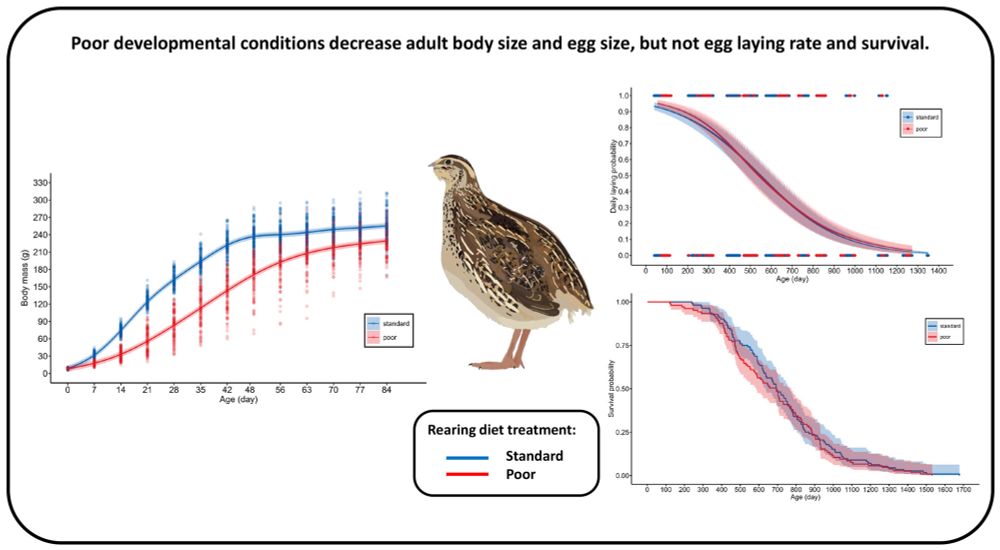There are still two more weeks to apply for the PhD position on nematodes, isotopes, metals and PFAS in the terns. Don't be shy to reach out when having questions about it either. :-)
28.11.2025 11:54 — 👍 6 🔁 8 💬 0 📌 0

Postdoctoral fellow
🐦 EcoBird is hiring a Postdoc in animal cognition!
Join us + @themanybirds.bsky.social to investigate innovation & problem-solving in birds.
📅 Start: as early as Jan 2026
🌍 Funded through UGent’s international mobility scheme
More info & how to apply ↓
www.ugent.be/en/work/scie...
13.11.2025 14:23 — 👍 33 🔁 47 💬 1 📌 3

There’s one month left to apply for the PhD position on interactions between contaminants and parasites in common terns, co-supervised by @alicecarravieri.bsky.social, Bernd Sures from @unidue.bsky.social and myself. You can do so here: euraxess.ec.europa.eu/jobs/380142
12.11.2025 22:49 — 👍 22 🔁 32 💬 0 📌 1

a couple of individually marked godwits. Photo by J. Seenstra
Want your modelling to save birds? PhD with me at UvA (Amsterdam): build spatial integrated population model for black-tailed godwits with world-class dataset and strong team here & @birdeyes-gfn.bsky.social/RUG). werkenbij.uva.nl/en/vacancies... Apply by 1 Dec 2025: #Ecology #Bayesian #Conservation
04.11.2025 11:31 — 👍 32 🔁 27 💬 1 📌 0

📢 PhD opportunity at @cebc-chizelab.bsky.social @ifv-whv.bsky.social @unidue.bsky.social
🎓 Interactions between contaminants and parasites in common terns
📅 Apply by 12/12/2025 at euraxess.ec.europa.eu/jobs/380142
#seabirds #ecotoxicology
@univ-larochelle.fr @commonternproject.bsky.social
20.10.2025 09:22 — 👍 33 🔁 35 💬 0 📌 1

We’re hiring a doctoral researcher in the area of migration ecology.
The work will focus on the question of how and when migratory songbirds learn where their home is using #Motus.
Part of the Cluster of Excellence NaviSense and linked with @sfb1372.bsky.social
uol.de/job788en
#ornithology
20.10.2025 10:13 — 👍 48 🔁 36 💬 0 📌 2

Out @animalecology.bsky.social today - a paper with David Ewing in which we explore the #HPAI outbreak in the terns. We find bird-to-bird transmission to be the main driver of infection and estimate the probability of mortality to drop from 0.26 to 0.14 from 2022 to 2023: doi.org/10.1111/1365...
09.10.2025 08:02 — 👍 33 🔁 22 💬 2 📌 1

When we hypothesised female terns to have lower mercury levels than males due to egg laying, @matteobeccardi.bsky.social et al designed an elegant experiment to prove the effectiveness of this pathway. That proof just got published & the open access paper can be found here: doi.org/10.1016/j.en...
18.09.2025 13:19 — 👍 34 🔁 16 💬 2 📌 0

Spread the word: we’re #hiring! We offer two short-term #fellowships for master’s degree holders and PhD candidates for 6-12 months to excellent researchers, who are interested in doing research within one dedicated project of our SFB/CRC 1372. Find more information on www.sfb1372.de/jobs
26.08.2025 08:39 — 👍 7 🔁 10 💬 0 📌 1
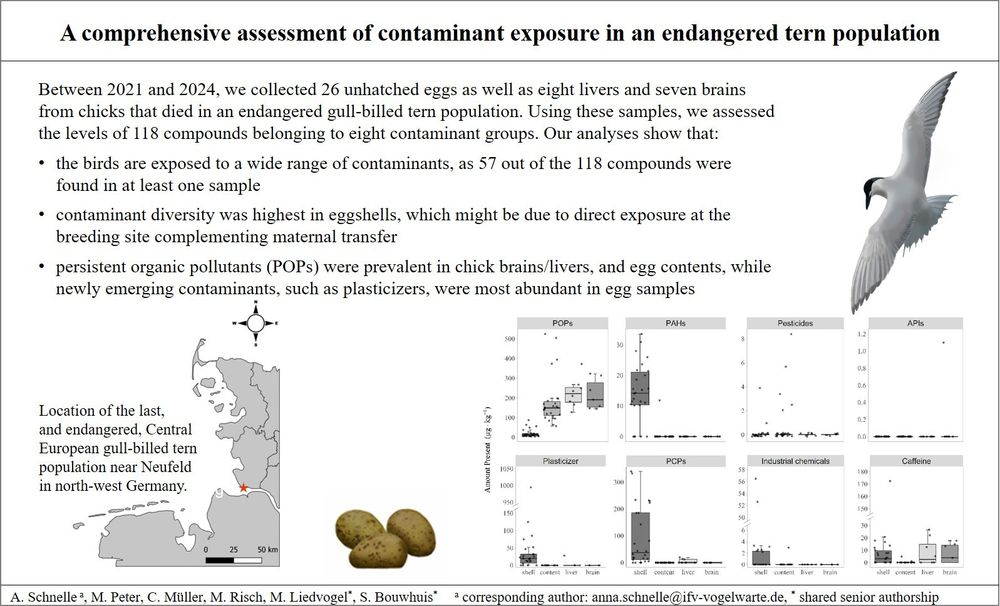
Out now in Environmental Research – Anna’s new paper in which she assesses the levels of 118 contaminants in unhatched eggs and dead chicks found in the last and endangered population of gull-billed terns in Central Europe, breeding at Neufelderkoog: doi.org/10.1016/j.en...
01.08.2025 07:21 — 👍 24 🔁 12 💬 1 📌 0
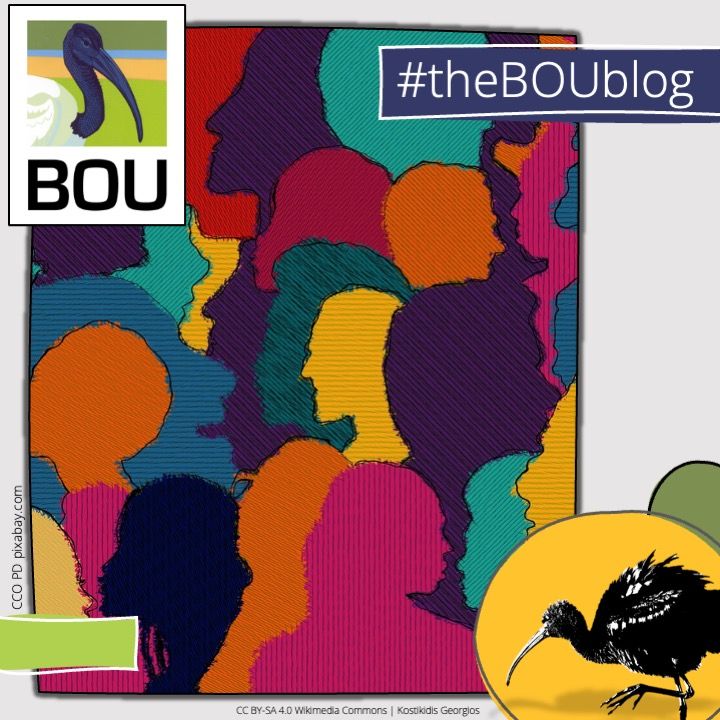
NEW on the #BOUdiversityBlog from Jamie Dunning
Why I don’t want to talk about my neurodivergence
bou.org.uk/blog-dunn...
#ornithology 🪶
28.07.2025 09:00 — 👍 15 🔁 11 💬 0 📌 1
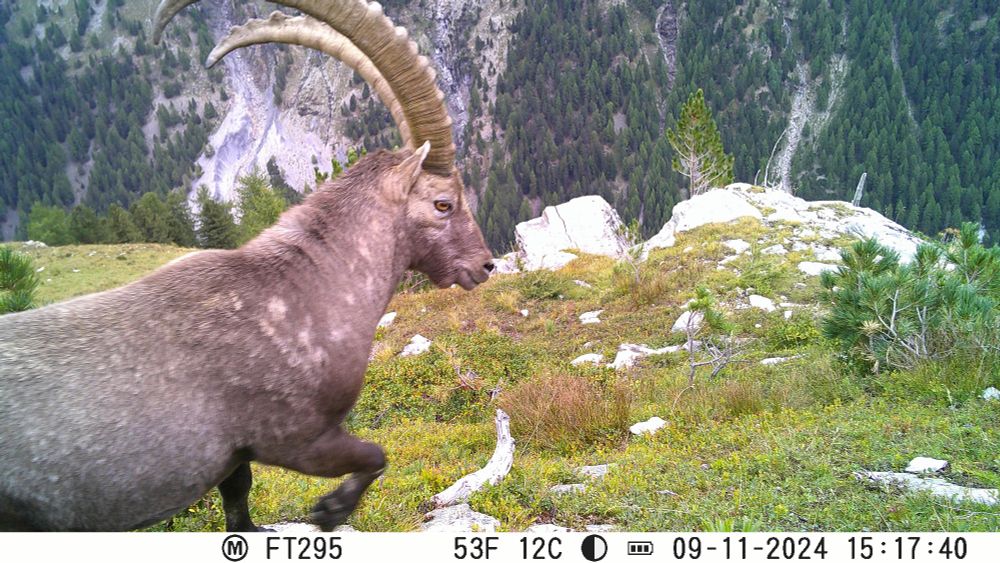
Alpine ibex (Capra ibex) captured in Stelvio National Park, Italy
Hey Camera Trappers 📸🐺🐗🦌🦅Snapshot Europe is back for 2025!
Join us in deploying cameras this Sept-Oct. Help build a crucial snapshot of European biodiversity. Learn more & express interest here ▶️ app.wildlifeinsights.org/initiatives/...
Spread the word and help expand our community across Europe🙏
08.07.2025 13:10 — 👍 22 🔁 18 💬 2 📌 1
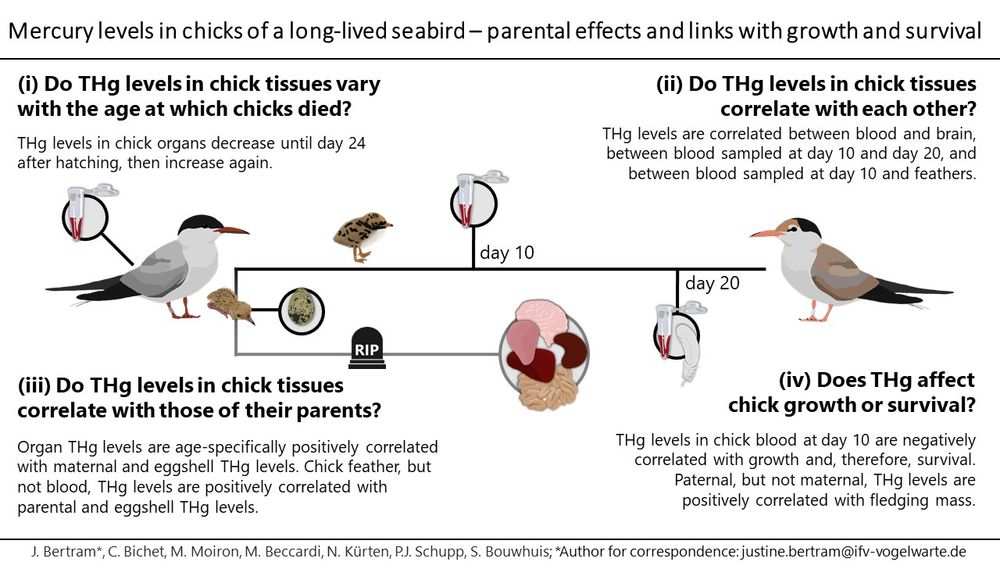
And here it is - Justine's last thesis chapter got accepted too and can now be read as an open access paper in Environmental Research: doi.org/10.1016/j.en...
07.07.2025 15:25 — 👍 25 🔁 10 💬 0 📌 1
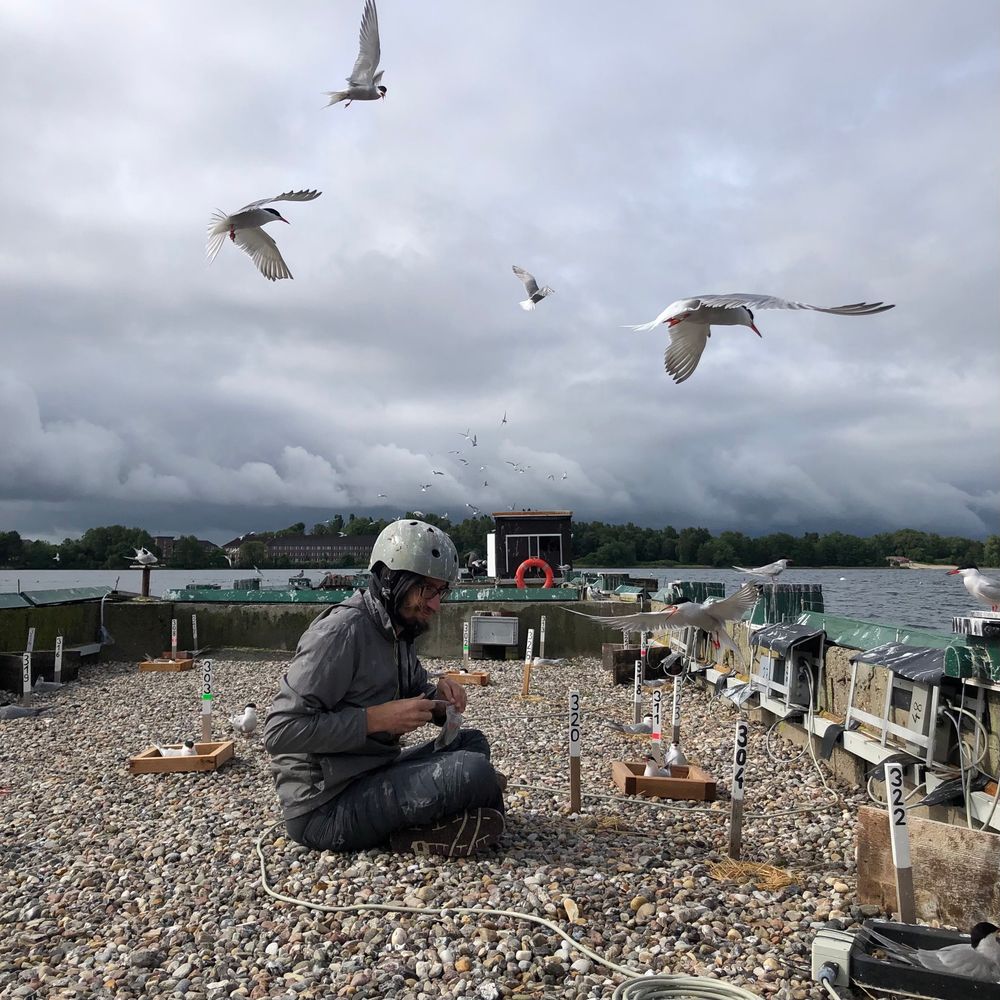
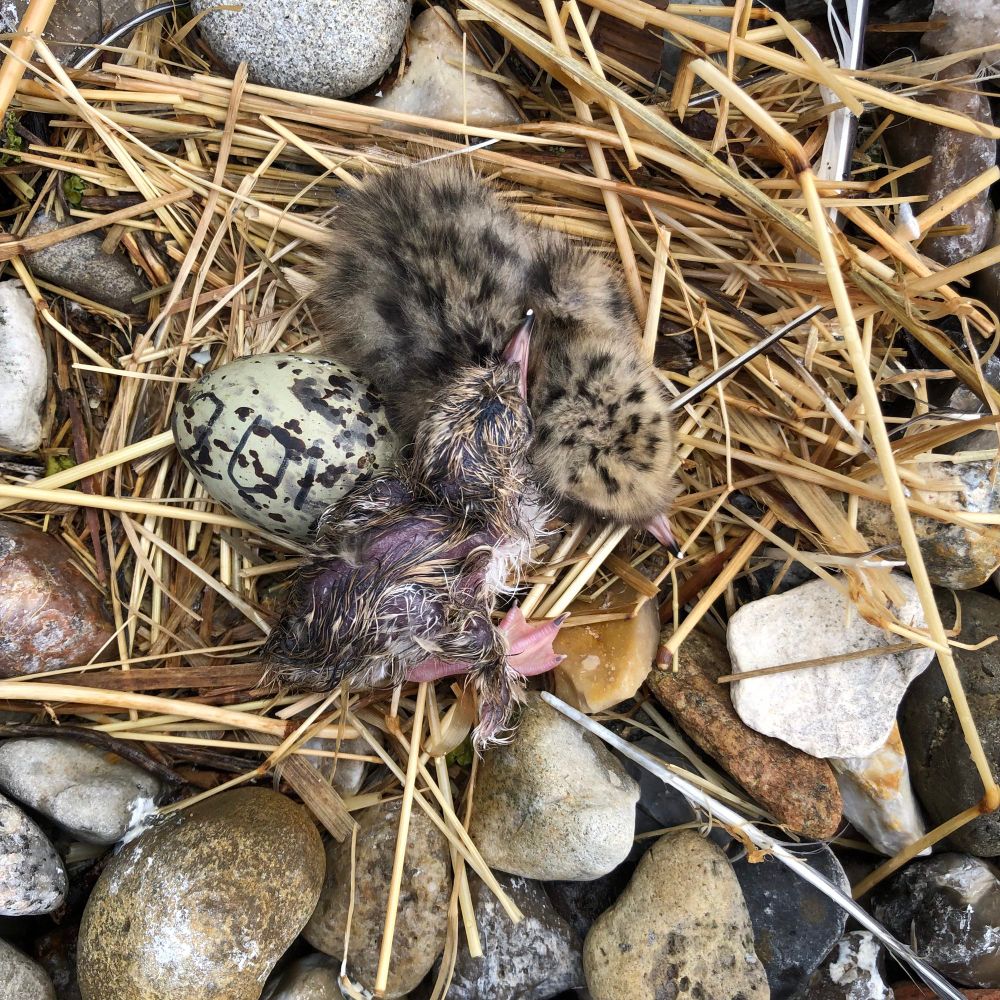
Fresh siblings and lots of chick ringing during today’s check of the colony. Even the rain held off to let us do our job. 🐣
28.05.2025 09:00 — 👍 42 🔁 8 💬 2 📌 0
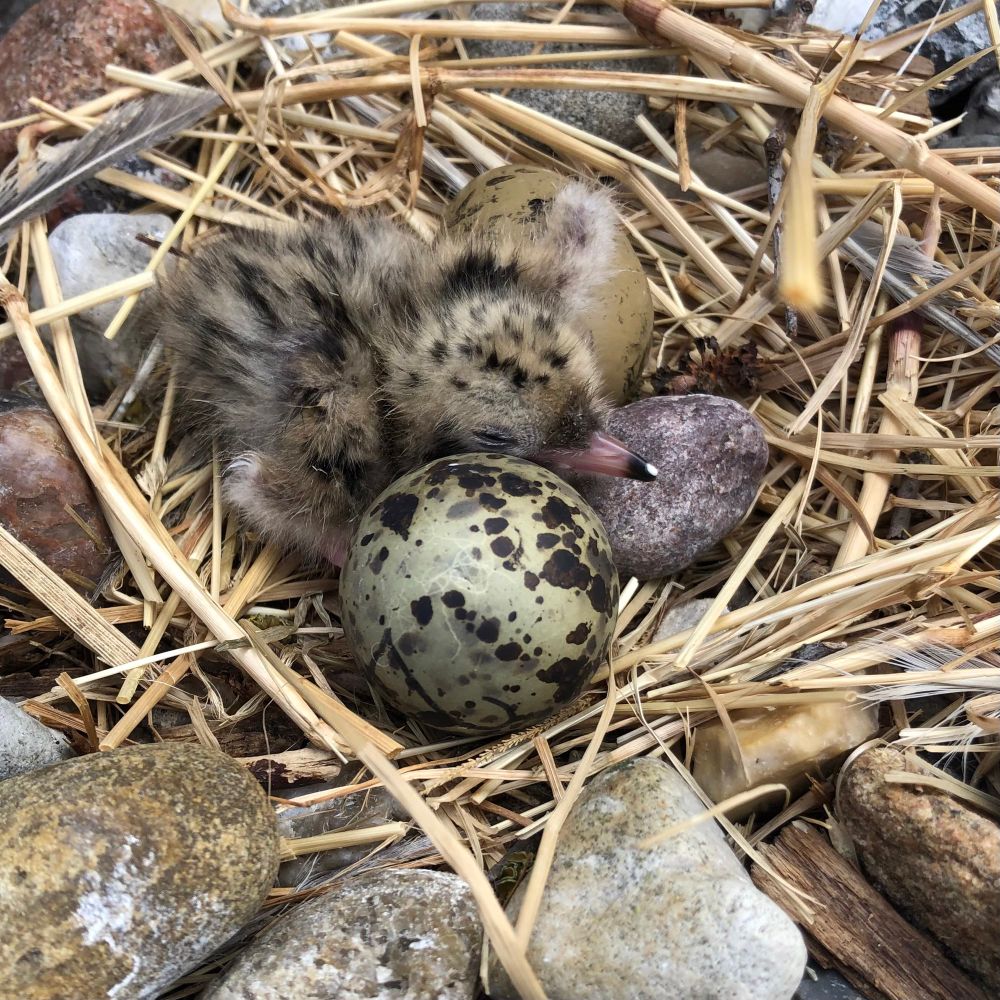
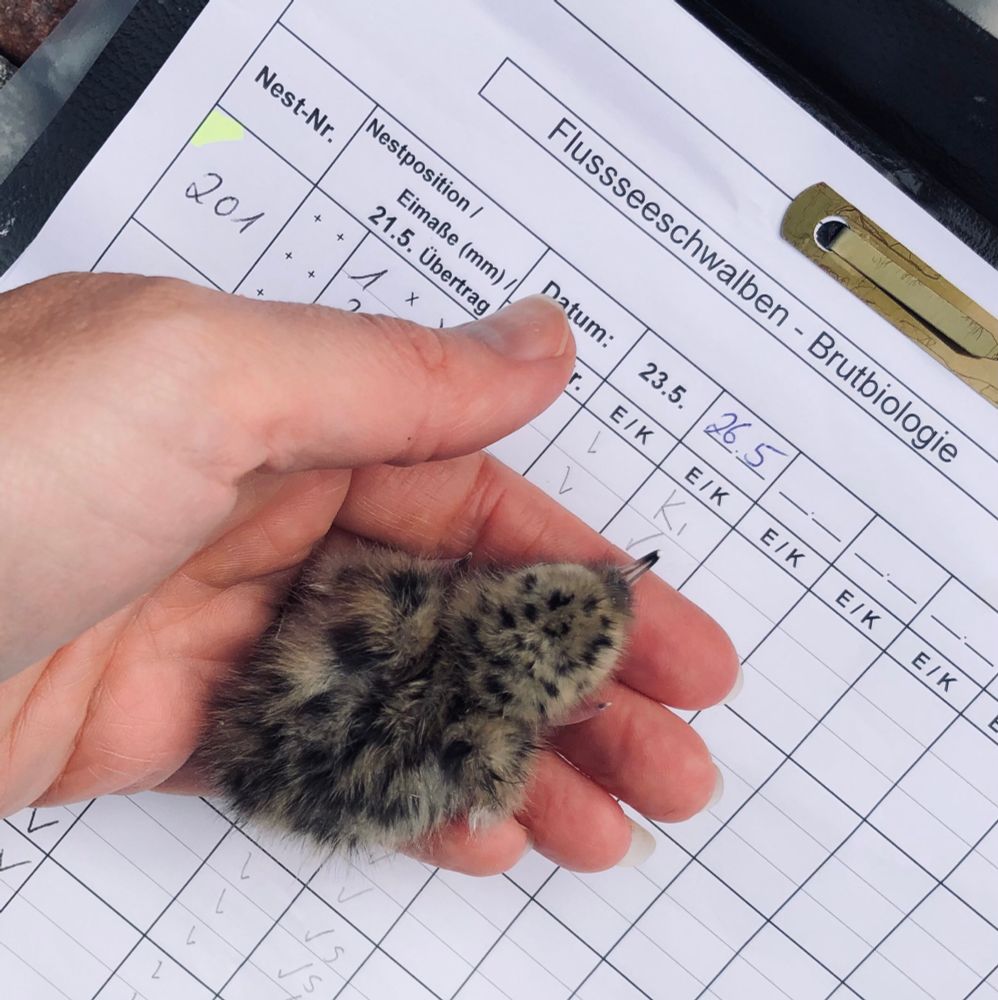
Live from the field: the first 4 chicks of 2025 have hatched. ❤️ #babyboom
26.05.2025 07:42 — 👍 61 🔁 10 💬 0 📌 1
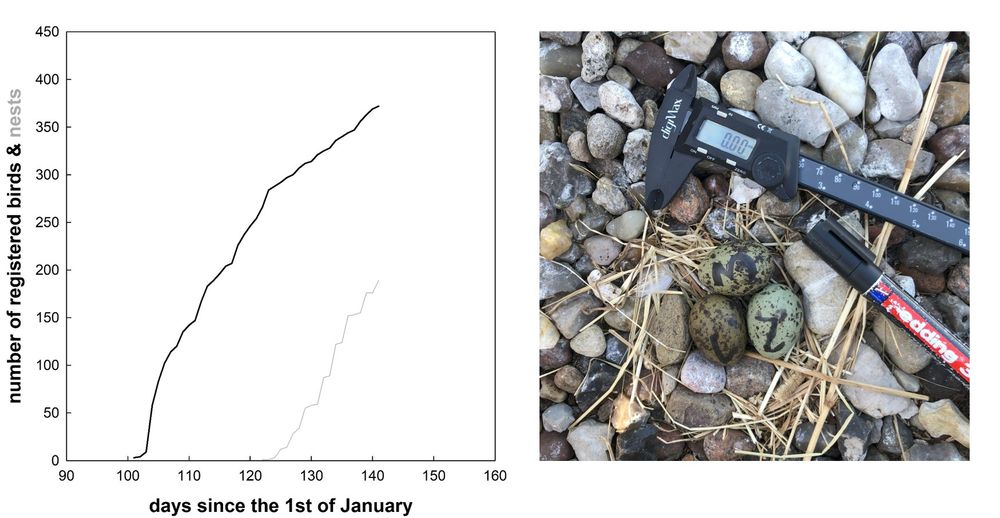
The Banter See season in numbers so far: we have registered 372 birds, 189 nests have been initiated, 42 blood samples have been collected and 28 birds have been caught to attach or remove a geolocator. Next up: chick ringing. Hatching should start any day now. ❤️
22.05.2025 07:18 — 👍 15 🔁 4 💬 0 📌 0
Let us introduce you to the Banter See common tern team 2025. :-)
15.05.2025 14:13 — 👍 25 🔁 1 💬 0 📌 0

We use blood-sucking bugs to collect blood samples from the terns without them realising we do so. This 'bugging' process started today, and thanks to Justine & María Jesús the first 3 samples of 2025 are in the pocket.
10.05.2025 13:27 — 👍 26 🔁 6 💬 1 📌 0
Whereas first arrival has advanced over the long-term study, first laying hasn't (and the same holds true when we look at the averages). Still, 2025 is a fairly early year, as there are only 8 years with an earlier first egg versus 23 with a later first egg. #phenology #seabirds
03.05.2025 20:10 — 👍 23 🔁 8 💬 0 📌 1

204 birds have now been registered by the automated registration system. Yesterday, one of our favourites returned too: 11-yr old Dextro, to us better known as our ‘bouncer boy’, because he’s the one that nests just behind the spot where we tie our boat and tries to keep us out of the colony. ♥️
27.04.2025 08:35 — 👍 15 🔁 4 💬 0 📌 0

Freshly out in Environmental Pollution – Anna’s new paper in which she assesses mercury pollution in the last and endangered population of gull-billed terns in Central Europe, breeding at Neufelderkoog, a heavily mercury-polluted area: doi.org/10.1016/j.en...
19.04.2025 21:28 — 👍 17 🔁 9 💬 1 📌 0

Sweet news: 24-yr old Roy & Sören both returned to the colony. After avian influenza killed mostly the older terns in 2022 and 2023, these two males have become the ‘oldies’. We’re hoping they’ll stick around for many more years, maybe even taking the age record, which currently is 27.
18.04.2025 20:20 — 👍 23 🔁 3 💬 1 📌 0
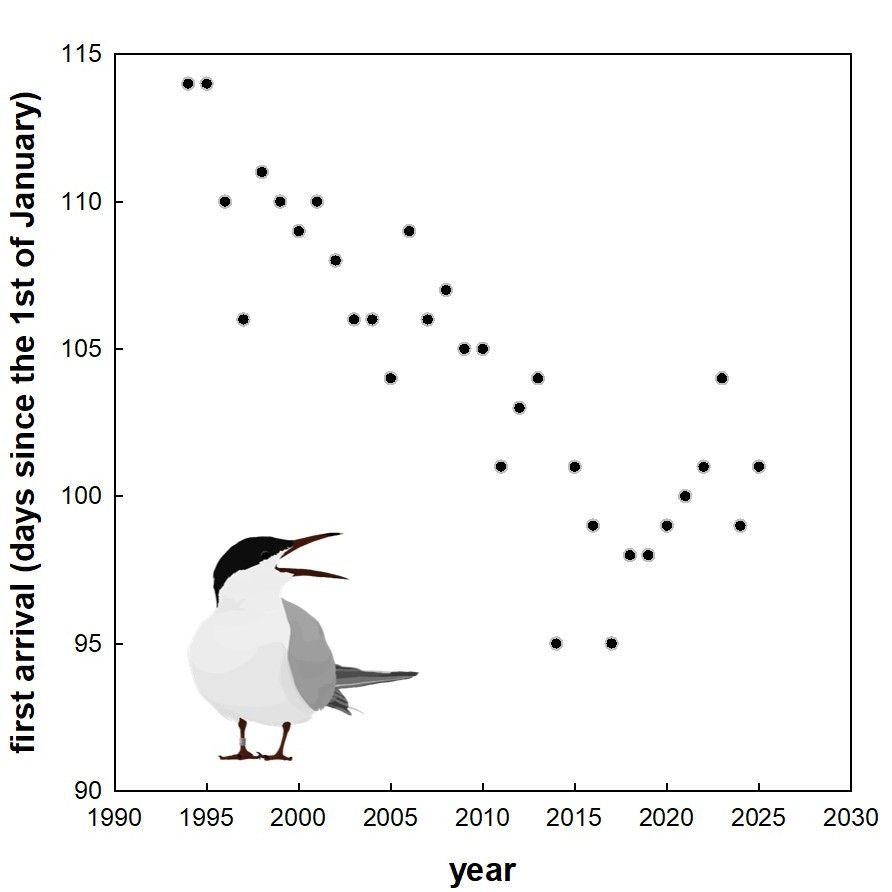
They're back! The first three terns arrived yesterday morning. The very first one was 18-year old Calimero. He was followed by 7-year old Severina and 13-year old Fabrice. All arived between 10:29 and 10:54. ♥️ #phenology #seabirds
12.04.2025 18:41 — 👍 87 🔁 14 💬 0 📌 2
Seabird Ecologist working mainly on movement, behaviour, and ecotoxicology.
Ecologist at the University of East Anglia | Macroecology, animal movement, global change
Behavioural ecologist studying a hotter and sicker world. Assistant Professor at Trinity College Dublin // he/him // www.gregalbery.me
UC Davis. Developmental drivers of individuality in the Amazon molly. Nature through nurture and a lot of noise. Really into random effects. Hard no to autocrats
The Cognition Lab @ UZH (PI: @koberauer.bsky.social) researches the capacity limits of #cognition asking: Why are we not smarter than we are?
We study how #workingmemory, #attention & #longtermmemory interact-using experiments, modeling & #psychometrics
Research Institute in Dept of Biology at University of Oxford studying all aspects of Behaviour, Ecology and Evolution of Birds in natural environments. Follow us for updates on science, seminars, jobs & field projects: https://egioxford.web.ox.ac.uk/
Epigenetic Inheritance, Neuroscience & anything biology-related
https://www.odedrechavilab.com/
https://www.qedscience.com
Organizer of “The Woodstock of Biology”
TED: https://shorturl.at/myFTY
Huberman Lab Podcast: https://youtu.be/CDUetQMKM6g
Ornithologist with PhD in evolution and population genomics, working in bird conservation, artist in my free time
Seabirds and Offshore Wind Farms. Currently a postdoc at Monash Uni, working on Australian albatross and petrels.
CNRS Research Scientist @cebc-chizelab.bsky.social @ecophycebc.bsky.social
Marine Ecotoxicology | Seabirds | Parasites | Stable Isotopes
Previously Contract Agent in the MSFD team at EC-JRC (Ispra)
Vultures, raptors, movement & carrion ecology. Conservation biologist trying to extinguish the fire with a dirty dish towel while everything is burning
PhD researcher working with marine mammals (and seabirds) | Tracking | Ecotoxicology | Diet | Modelling
Applied mathematical modeller at Biomathematics and Statistics Scotland working on a variety of parasites (mainly gastrointestinal nematodes), vectors (mainly mosquitoes) and sometimes I dabble in Bayesian inference (currently avian influenza in seabirds).
DPhil student @intelligentearth.bsky.social & Oxford biology graduate.
Machine learning, biodiversity, sensory ecology, biologgers, birds
non-practicing intellectual on war & tech
NL/EN
Master’s by Research @ Exeter University
Social Evolution, Ecology, Conservation, Seabirds | BTO C-Permit Ringer 🪶
Master of Marine Policy, BSc Marine Biology 🌊 📝
Working in marine policy and marine mammal science. I like whales 🐋
📍 Alaska
Researcher interested in animal movement, conservation, light pollution, seabirds and climate change.



























